Radio This Week Back Then #49: December 29-January 4
Sydney, Manchester, Reading, New Orleans, Shreveport, Jackson are in the mix this week
What was on the radio this week…back then. This is a weekly visit of radio audio from this week in past years for those that enjoy radio history, those working in radio looking for promotional ideas, or stations looking to re-find lost audio of their heritage. If you enjoy these weekly audio rewinds, they take a lot of time to put together, so please do me a favor, subscribe, and share and pass it on. Thank you! A searchable and sortable index of all the audio is located on the Aircheck Index page.
This week includes airchecks from a couple of trips I took across the pond — 1997 visit to the UK and a 2019 trip to Sydney — as well as some end-of-1985 airchecks from New Orleans, Shreveport, and Jackson. The 1985 ones came on a tape of scoped airchecks from a mix of stations from those markets.
Sydney | classic rock 2MMM 104.9 “Triple M,” CHR 2WFM 106.5 “Kiis 106-5”
Manchester | Gold-based AC Piccadilly 1152
Reading | CHR 2-Ten FM 97.0/102.9
New Orleans | CHR WQUE-FM/AM 93.3/1280 “QUE,” CHR WEZB 97.1 “B97,” R&B WYLD-FM 98.5 “FM98,” rock CHR WRNO-FM 99.5 “FM100, the Rock Of New Orleans,” AC WLTS 105.3 “Lite 105”
Shreveport | CHR KMBQ 93.7
Jackson | CHR WTYX 94.7 “94 Tyx,” CHR WQMV 98.7 “Q99”
Happy listening and reading!
Launched on 20 January 2014, 2WFM changed from “Mix 106.5” to CHR using the “Kiss 106.5” moniker, but stylized as “Kiis” after KIIS-FM 102.7 Los Angeles.
The new format also came with new morning show The Kyle & Jackie O Show, who crossed from hot AC AC rival 2DAY 104.1. The pair still hosts AM drive on 2WFM today, though they were off on holiday when I recorded AM drive this week back in 2019.
As Sydney is in the southern hemisphere, summer began a few weeks ago in December. So, the big promotion was for the “Kiis 106-5 Summer Break” ticket giveaway contest. “So Sydney, So Kiis…”
This is my kind of classic rock station. Between the mid-2000s and mid-2010s, the positioner “Everything That Rocks” or “Everything Rock” was used on a lot of rock outlets in the US. 2MMM used “Rock’s Greatest Hits,” but might as well used “Everything That Rocks” as it spanned 50 years of rock across various subgenres — Led Zeppelin to Lifehouse, Cream To Cake, and just about everything in between including a few new Aussie tracks…
The Triple M brand now is used on several dozen stations across Australia.
Originally launched in 1974 on 1151 kHz on the AM dial — or medium wave (MW) as it is called in the UK — the station shifted to 1152 kHz in 1978. In the 1980s, it moved to oldies as “Piccadilly Gold”. It shifted to the gold-based AC “Piccadilly 1152, Manchester’s Best Music” format heard on this aircheck in the mid-1990s, a bit of an unusual move for an AM/MW music outlet to shift to be musically more current since younger demos were fairly well shifted to FM by then.
This aircheck is of an evening listener request show. One of the listeners requested “The Power Of Love.” In the UK, that would be wanting the original 1984 version of the song by Jennifer Rush, which was a #1 hit in the UK. Not so much in the US. That version only peaked at #57 on the Billboard Hot 100 chart. Two remakes of the song were followed in the 1980s: Air Supply’s 1985 version did worse as it peaked in the US at #68, and Laura Brannigan’s 1987 version saw more success at a peak of #26. The fourth try ended up being the charm in the US as Celine Dion’s 1993 version was a #1 hit on the Billboard Hot 100. In this case, Rush actually out-did Dion on vocals…
A couple of years after this aircheck, the station was rebranded as “Magic 1152,” becoming aligned with its sister outlets in other markets under the corporate “Magic” brand based out of Magic 105.8 London. The consolidation wave of the 2000s soon led to more national programming in place of local airshifts. There were a couple of rebrands in the 2010s before it was flipped to “Greatest Hits Radio Manchester” as part of owner Bauer’s launch of its Greatest Hits Radio network. Bauer ended up purchasing 96.2 in the market, and 1152 began simulcasting the classic hits format with 96.2. After a couple of years, the 1152 facility was turned off in April 2021 and no longer exists, and the classic hits format remains running only on 96.2.
I first came across 2-Ten FM in 1994 on a business trip for a week to the nearby town of Maidenhead to visit one of the UK sites of the company I worked for at the time. I couldn’t immediately figure out where the name came from — no 210 highway in the area, no 210 area code or telephone exchange, etc. The answer turns out to be its original frequency from its sign on in 1976 — 1431 kHz. 1431 kHz is a wavelength of 210 meters in metric.
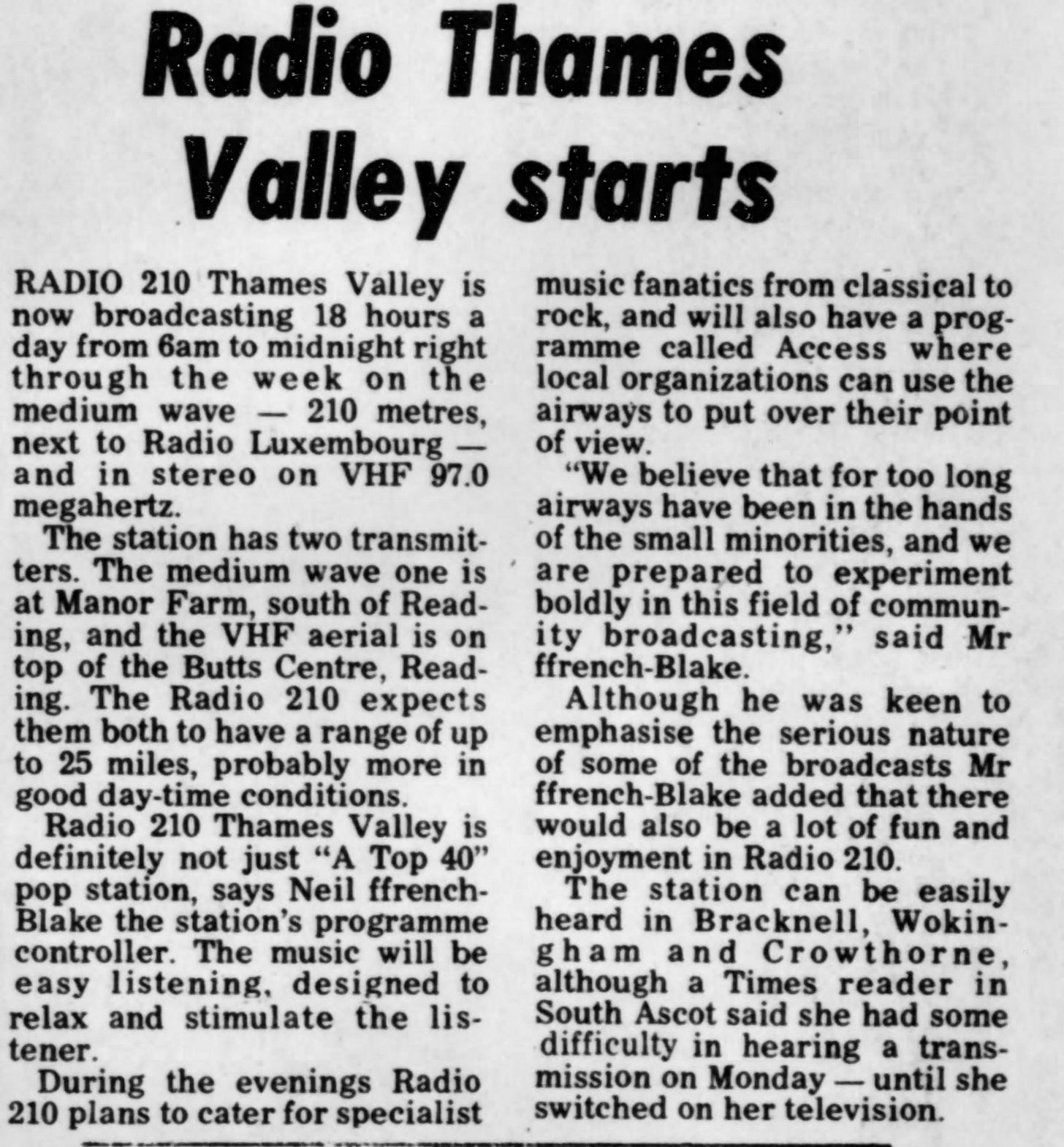
As noted in the newspaper article above, Radio 210 signed on with an easy listening format during the day and various programs at night on both 210 m (1431 kHz) and 97.0. As people shifted to FM, the station later became "210FM” and then “2-Ten FM.”
In the 1980s, a second FM signal came via 102.9 Basingstoke to further expand coverage in the county of Berkshire. The AM/FM combo split in 1990. A 3rd FM relay has since been added on 103.4 Henley-on-Thames.
2-Ten FM became hot AC Heart Berkshire, part of the Heart-branded network stations in the UK, based off of Heart 106.2 London. It was merged with the FMs making up Heart Oxfordshire to become Heart Thames Valley. In 2019, following more consolidation and the elimination of local programming, a couple dozen FMs, including the ones from Heart Thames Valley, were combined to network regionally as the present day Heart South.
Related: New Orleans, WQUE, 93.3 New Orleans, 1280 New Orleans
I detailed WQUE-FM’s history back in RTWBT #28. At this point, WQUE and WEZB below were the primary CHR competitors in the market. This aircheck is of their morning show of John Walton & Steve Johnson. The show started on WQUE in 1983 with Walton being the straight man to Johnson’s cast of stereotypical — and often politically incorrect — characters. They displaced Scoot In The Morning (see WRNO-FM below). After this aircheck, they would soon leave New Orleans to do mornings at CHR KTKS 106.1 “Kiss 106FM” Dallas/Fort Worth. They would then return to New Orleans and aired on several stations and later became syndicated. As part of the show evolution from its days on music FMs in the 1980s, the show became talk-based. Although Walton passed away several years ago, the show continues in syndication with Johnson and runs on crosstown WRNO-FM today and a some other conservative talk outlets (KPRC 950 Houston, WJBO 1150 Baton Rouge).
WQUE-FM shifted to rhythmic top 40 in the late 1980s and then evolved to R&B “Q93,” which it remains today.
Related: New Orleans, WEZB, 97.1 New Orleans
I have put up a couple WEZB airchecks in previous editions (and I still have many to digitize in future editions). As detailed in those previous editions, WEZB’s pop days date back to 1979 when it flipped from easy listening to disco at the start of the year and moved to dance by the end of the year and then to top 40 under the “B97” brand. In the mid-1980s, WQUE and WEZB were the primary CHR combatants in the market.
As noted in the previous editions, WEZB broke from CHR in the mid-1990s when it flipped to a short-lived talk format and then to hot AC before evolving back to CHR in 1998. All those formats were under the “B97” brand, which has remained a constant since 1980.
Related: New Orleans
2025 will be the 50th anniversary of WYLD-FM signing on 98.5. It has been some variant of R&B since it came on in 1975. At this point in the mid-1980s, it was the R&B leader in the market. As a throwback to a previous time, on this aircheck, it was still running station editorials. Editorials were still a feature on a few New Orleans media outlets then, notably CBS affiliate and then-dominating ratings monster WWL-TV 4, which had daily editorials on its “Eyewitness News” newscasts with Phil Johnson, who did editorials for over 35 years on the station.
After coming under common ownership with WQUE-FM, WYLD-FM was shifted to adult R&B in the early 1990s while WQUE-FM remained as the younger-demoed hip hop and R&B outlet. It maintains the adult R&B format today.
Related: New Orleans
WRNO-FM initially was a progressive outlet that evolved to AOR. At this point and through the rest of the 1980s, it was still marketed largely as a rock station — and using its longtime “FM100 WRNO, the Rock Of New Orleans” branding — but musically was really somewhere between AOR and CHR as it included some pop tracks. In this aircheck, for example, it spins Madonna’s “Crazy For You” as part of its top 30 tracks of 1985.
The other distinction for WRNO-FM at the time was that it had a shortwave station, referenced on the aircheck as WRNO Worldwide. It initially ran its own programming before switching to simulcasting WRNO-FM for a while until it changed to running religious programming.
WRNO-FM did drop the pop tracks and evolved back to AOR. At the start of 1995, it shifted to classic hits “the River 99.5.” It evolved from there to classic rock. In November 2006, WRNO-FM flipped to conservative talk. Concurrently, clustermate black gospel KHEV 104.1 “Hallelujah 104.1” flipped to rock and picked up the “Rock Of New Orleans” slogan as KYRK. WRNO-FM remains talk today.
Related: New Orleans
WLTS debuted the year before this aircheck in the summer of 1984, flipping from R&B WAIL. The other 1984 change was moving its tower closer to New Orleans. WLTS skewed more to the softer side during the 1980s, but would evolve to hot AC in the late 1990s.
WLTS relicensed from Slidell to Kenner in 1998. It shifted from hot AC to modern AC as WKZN “105-3 the Zone” in 2000. WKZN briefly became rocker WKBU “Bayou 105.3” in 2005 — until Hurricane Katrina struck in August and damaged the transmitter and took it off the air. While the 105.3 facility was being repaired, WKBU’s calls and format moved to sister classic hits WTKL 95.7 and 105.3 took the WTKL calls. When it returned to the air, it simulcasted sister news/talk WWL 870 in order to deliver WWL’s acclaimed Katrina coverage on FM. In the spring, WTKL flipped to classic hits “Kool 105.3” — but for only three weeks before reversing course. In April 2006, it flipped back to simulcasting WWL permanently and took the WWL-FM calls.
Related: Shreveport
KMBQ evolved from an AOR to top 40 during 1984. It’s rock rival, KROK 94.5, flipped to country KWKH-FM in September 1984, leaving the market without a rock station until AC KTAL-FM 98.1 claimed the position at the very end of 1984.
CHR KTUX 98.9 “Fun Radio Tux 99” signed on in April 1985 as a new signal in the market, giving KMBQ tough competition as KTUX zoomed up the ratings after its debut. To counter, in August, KMBQ started positioning itself as the “93 The New KMBQ” and began issuing “wimp alerts” every time KTUX played something “wimpy.”
KTUX won out as this aircheck comes near the end of the line of KMBQ. If flipped to 1960s-early 1970s oldies a few weeks later on 23 January 1986. A few days later after that came new KITT call letters.
KITT would shift to AC, and, in 1994, KITT flipped to country “Cat Country 93.7.” It rebranded as “Thunder Country T93” in 1999. The country format was relaunched again in 2001 as KXKS-FM “Kiss Country 93.7,” which it remains today.
As a top 40 outlet, WTYX had more than a decade run before flipping to oldies in 1990. This aircheck is from the middle of that run at the end of 1985. Both this aircheck and the WQMV one below are of the AM drive shows from 30 December 1985.
The oldies format shifted to classic hits “Arrow 94” in 1994. In 2004, it flipped to adult hits “94-7 Jack FM” under the WWJK calls. In 2012, WWJK got snatched up by Educational Media Foundation’s acquisition spree, and it converted to be Jackson’s relay of EMF’s K-Love contemporary Christian network under the WJLV call letters, which it remains today.
While I recall WTYX and heard it a few times over the years, I do not recall ever hearing WQMV outside this aircheck. It was classified then as a top 40 outlet, though in 1985, stations were either top 40 or AC as there was no such thing as a hot AC since that term and the format itself took off several years later. From listening to it, I suspect WQMV may have been closer to what we call hot AC these days as it seemed to carry a lot of recurrents or gold.
The 98.7 signal has gone through several changes since this aircheck. In 1986, it flipped to country WCKO. WCKO changed from country to rock “98 Rock” in 1988 and then back to country as WIIN “Win 98” in 1989. WIIN would move to R&B “98 Jamz” in 1994. In 1995, R&B WIIN shifted to adult R&B using SMN’s The Touch network and then, in the summer, went back to country as WJKK (“Capital Country”). In 1997, WJKK flipped from country to AC “Love 98.” The AC format is now branded as “Mix 98.7.”
As always, the logos and other intellectual property belong to the stations. The recordings were made from over the air broadcasts.




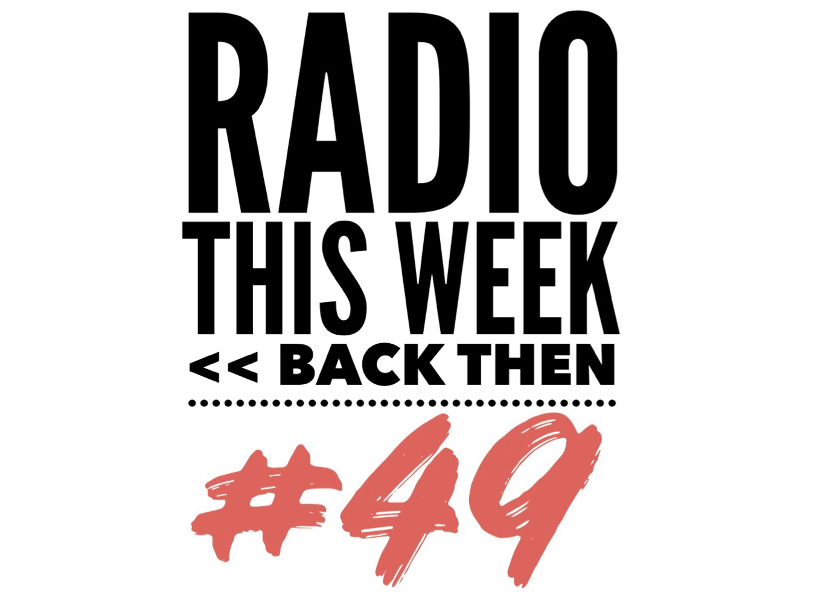















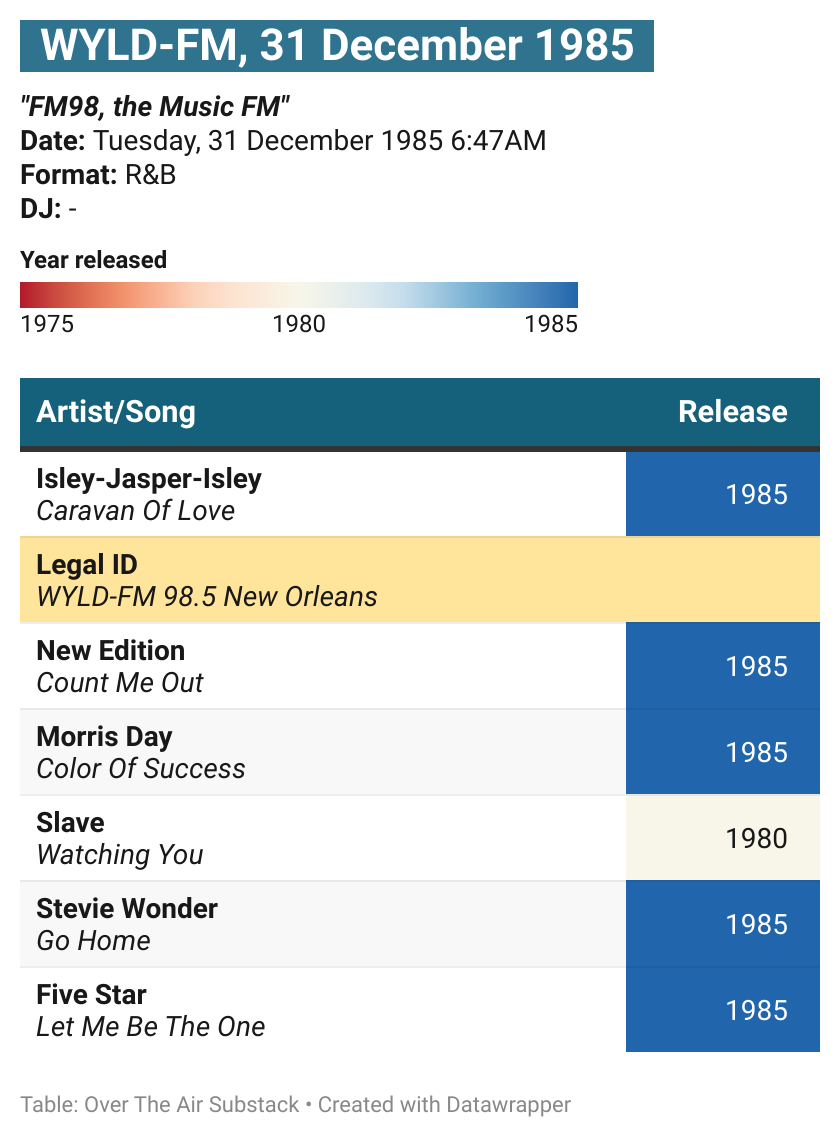

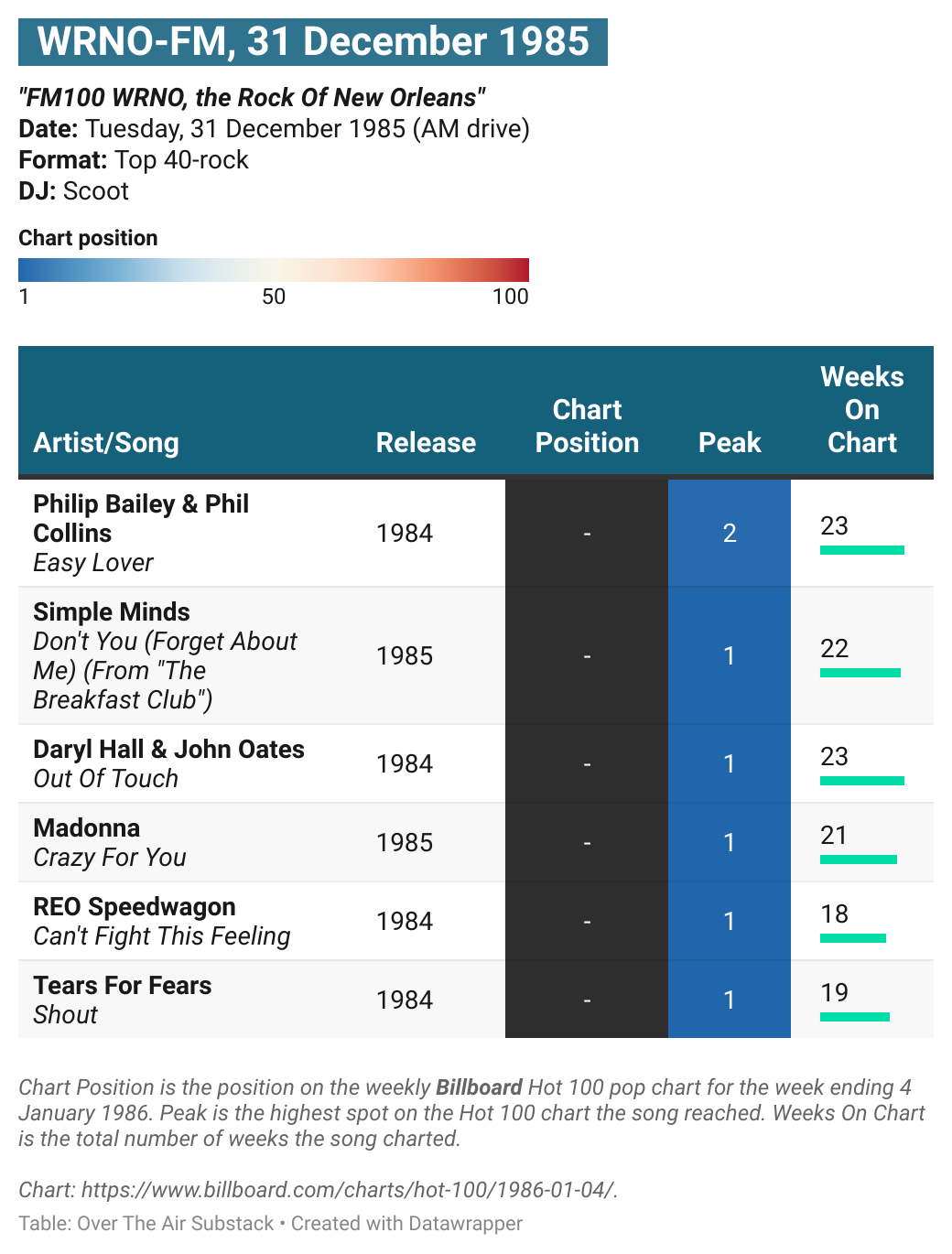





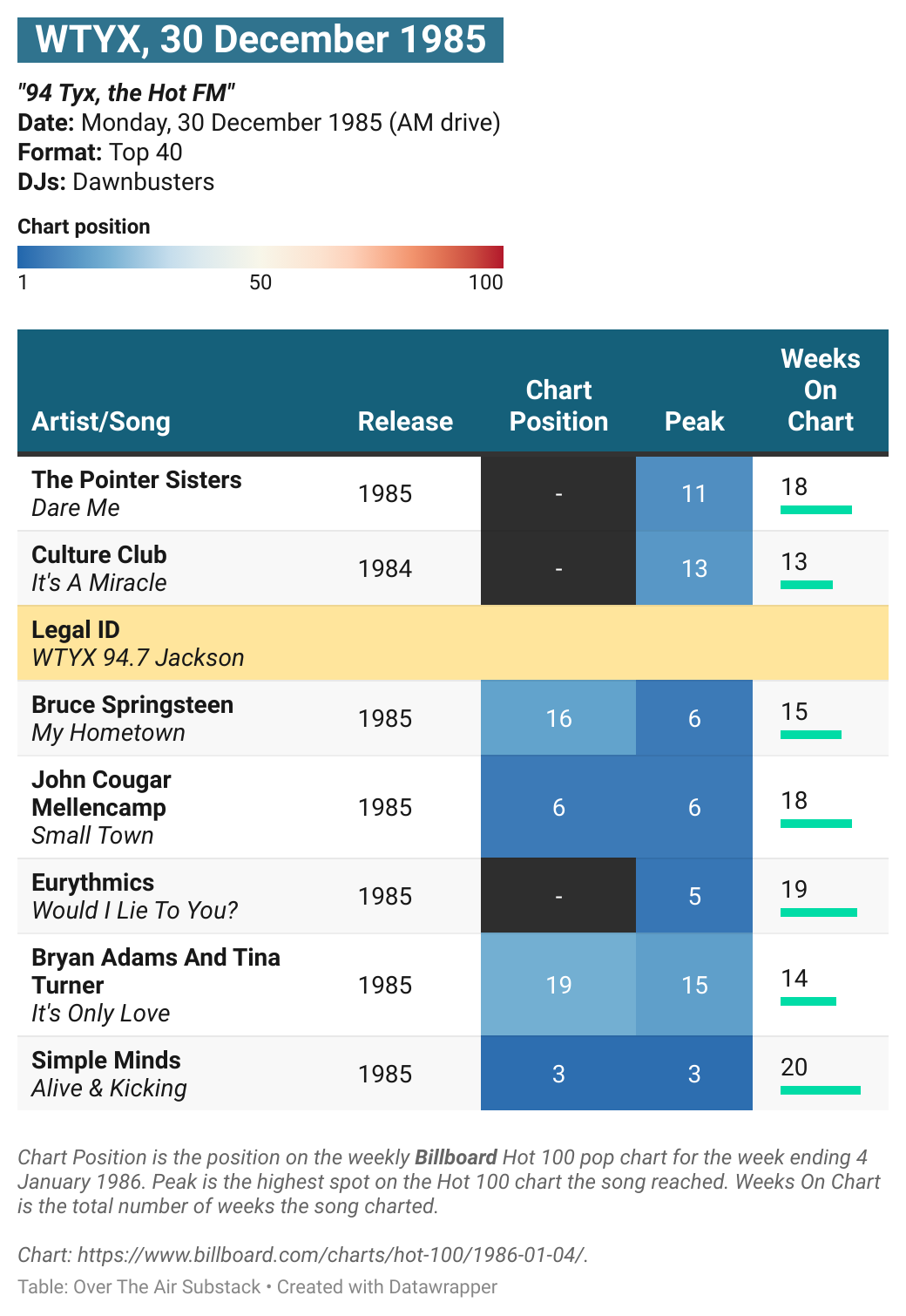

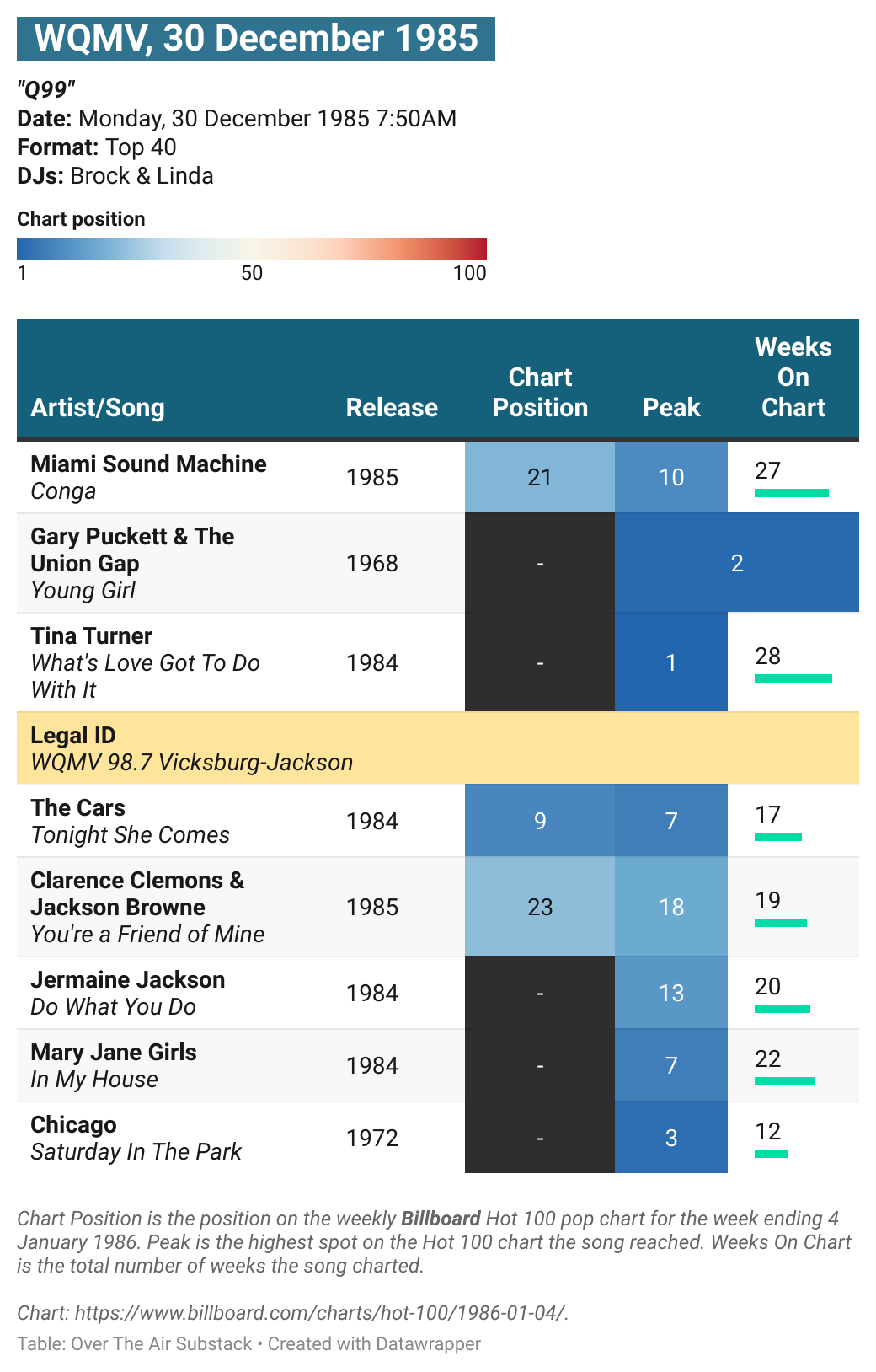
1986: Jackson, Mississippi had GREAT radio.
WJMI (JMI 100): the station had LOTS of electro and freestyle in the '80s
WQMV (Q99): went country in November, 1986
WSTZ (Z106): flipped to (some type of) rock in January, 1987
WTYX (94TYX): became an oldies station in March or April, 1990
In the 1980s, radio in Jackson, Mississippi was GREAT! :)